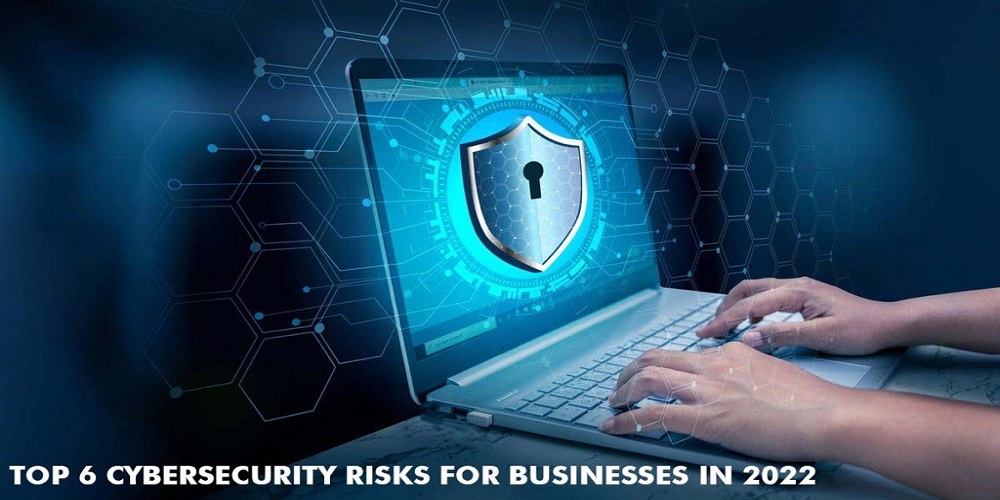Cybersecurity dangers and breaches alarmingly increased in 2021. Since then, 2021 is setting new records for the volume of cyberattacks and the amount of data lost due to violations of worldwide epidemic and political turmoil. And regrettably, 2022 is expected to be even more difficult.
Surprisingly, 4 out of 10 firms were subject to at least one cybersecurity assault just a few years ago. However, in 2021, that proportion rose drastically, to 86.2%.
The information security industry is vigilant due to various new and growing cybersecurity threats. The data and assets of businesses, governments, and people are always at risk due to more complex assaults involving malware, phishing, machine learning and artificial intelligence, cryptocurrencies, and more.
Each minute, cybercrime costs $2.9 million. Keeping all these facts in mind, let us examine potential cyber security assaults and the top cyber security risks to small and medium-sized organizations in 2022.
What is cyber security?
The practice of protecting computers, servers, mobile devices, networks, and data from cyber-attacks is known as cybersecurity.
Cyber security includes safeguarding your business, personnel, clients, and suppliers. Cybercriminals work around the clock, seven days a week, to circumvent your defenses as they become more sophisticated and well-funded.
Five primary cyberattacks that can compromise your business:
Phishing: By fooling your employees into clicking on malicious links, these assaults aim to obtain login or other information from them. You can find these links online, in emails, chats, social media, messaging applications, and more.
Ransomware: A subtype of malware that encrypts data on infected systems and requests a ransom in bitcoin or cash to decrypt it.
Malware: Malware is a category of software intended to corrupt your IT infrastructure through viruses, worms, trojans, spyware, adware, ransomware, and others.
Denial of Service: These attacks try to stop you from using your network’s services by bombarding the target systems with requests until the targeted servers are overwhelmed and unable to answer.
Man in the Middle Attack: Attacks known as “man in the middle” occur when thieves intercept and modify network traffic between IT systems. Criminals accomplish this by pretending to be network senders and receivers.
Let’s look at 2022 now that we have covered your company’s worst cybersecurity risks.
The top 6 threats to cyber security in 2022
1) Phishing
For small to medium-sized businesses, phishing is the main reason for cyber-security breaches. Phishing is a form of fraud in which attackers masquerade as a reputable entity using a person’s email or other forms of communication. Attackers commonly use phishing emails to distribute malicious links or attachments that perform various functions.
2. Remote Employees
Since the epidemic is still active, working offsite has become commonplace. A hybrid work environment has become the “new normal.” As working from home becomes common it also becomes an easy way to commit cybercrime in the form of data theft. These cybercriminals attempt to access corporate data, by manipulating remote workers. Additionally, enterprises must be aware of the continuing cybersecurity threat of Covid-related spam.
3. Ransomware and Malware
When it comes to cyberattacks, malware is one of the most general mechanisms. Any malicious software designed to damage a computer system. When malware infiltrates a network, it performs suspicious actions, including data encryption, deletion, or theft.
Malware can also spy on a user’s activity or take control of their computer or another device. Worms, viruses, Trojan horses, and spyware make up the category of common malware.
Ransomware, as its name implies, entails software that locks the victim’s computer or files and demands a ransom payment. And the ransom usually wants some offer in exchange for granting the user access to their computer or another device. Phishing emails or consumers accessing an infected website are two ways ransomware spreads.
4. Stuffing credentials
An attack is known as “credential stuffing” involves collecting a user’s login information. Credential stuffing frequently occurs when people use the same login information for numerous websites or accounts.
Since so many users reuse their usernames and passwords, sending those credentials to dozens or hundreds of other websites when credentials are exposed can enable attackers to compromise other accounts.
A brute force attack is what is known as credential stuffing. Brute forcing is the process of guessing a password by trying a variety of passwords on one or more accounts.
5. Inadvertent Sharing
Sometimes you accidentally hit “reply all” on an email when you only intended to reply to one person. Then all email recipients receive the personalized reply you sent to just one person.
When information is mistakenly shared, it occurs. No virus or hacker, but typically a human error is to blame.
Personal and professional data discloses through emails, unprotected forms, social media, and messaging services.
6. Scamming (Text message phishing)
Smishing, or SMS-based phishing, is included in the general phishing category, but there are some peculiarities.
Standard phishing occurs online or through emails, while Smishing happens via SMS text messages sent to and from your phone. Your phone receives an SMS text message from the hacker that contains a link. The onslaught begins the moment you click the link.
A message from your bank demanding you to enter your social security number is a standard smishing attack. Or a parcel delivery scheduler like UPS or Amazon asking you to schedule a delivery might send an SMS.
Conclusion
Understanding these common cyber security attacks will help you safeguard your business and yourself in today’s connected environment, by having an IT provider like Metis Technology that monitors your equipment and proactively resolves issues before they can affect your day-to-day operations. You can contact us for further cybersecurity details.
Tags: cyberattackscybersecurityIT ManagementIT ServiceMalware

